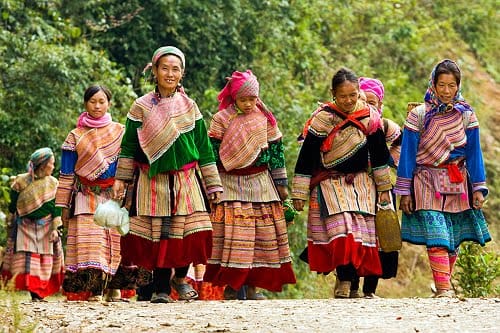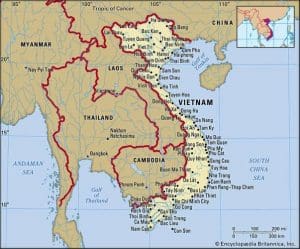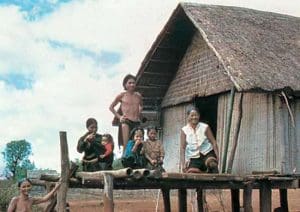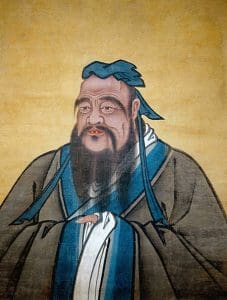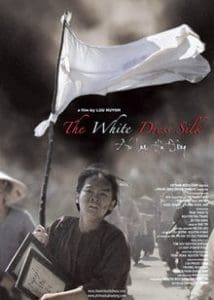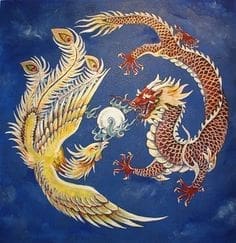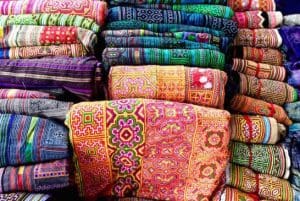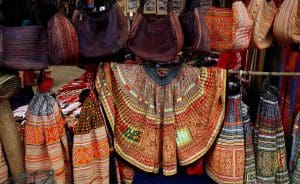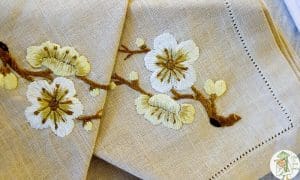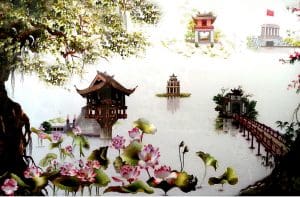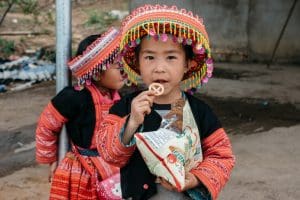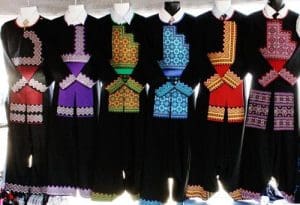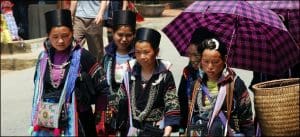Introduction :
Vietnam is a country occupying the eastern portion of mainland Southeast Asia. It is bordered by China to the north, the South China Sea to the east and south, the Gulf of Thailand (Gulf of Siam) to the southwest, and Cambodia and Laos to the west. From north to south the uplands of northern Vietnam are often divided into two distinct regions—the area north of the Red and therefore the massif that extends south of the Red into neighboring Laos.
The northern a part of Vietnam is on the sting of the tropical zone. During January, the coldest month of the year, Hanoi features a mean temperature of 63 °F (17 °C), while the annual average temperature is 74 °F (23 °C). Farther south, the typical annual temperature in Hue is 77 °F (25 °C) and in Ho Chi Minh City is 81 °F (27 °C); within the highland city of Da Lat, it drops to 70 °F (21 °C).
The winter season in northern Vietnam lasts from November to April; from early February to the top of March there’s a persistent drizzle, and March and April are sometimes considered to be a transitional period. The summer in northern Vietnam lasts from April or May to October and is characterized by heat, heavy rainfall, and occasional typhoons.
Diverse cultural traditions, geographies, and historical events have created distinct regions within the country. The lowlands generally are occupied by ethnic Vietnamese, while the highlands are home to numerous smaller ethnic groups that differ culturally and linguistically from the Vietnamese. The highland people are often divided into the northern ethnic groups, who have affinities with peoples in southern China who speak Tai languages; and therefore the southern highland populations, who have ties with people in Cambodia, who speak Mon-Khmer languages (Austroasiatic family), and people in Indonesia et al. in Southeast Asia , who speak Austronesian languages.
Languages:
Vietnamese is the official language of Vietnam.The language of the Khmer minority also belongs to the Mon-Khmer group, whereas Cham belongs to the Austronesian family. Many Montagnard people—such because the Rade (Rhade), Jarai, Chru, and Roglai speak Austronesian languages, linking them to the Cham, Malay, and Indonesian peoples; others—including the Bru, Pacoh, Katu, Cua, Hre, Rengao, Sedang, Bahnar, Mnong, Mang (Maa), Muong, and Stieng—speak Mon-Khmer languages, connecting them with the Khmer.
Religion:
Religions like: Confucianism, Daoism, Buddhism, Mahayana Buddhism, Roman Catholicism are followed and most Cham are adherents of Islam. It is largely this religious amalgam that is practiced by the roughly half of the population that identifies itself as being Buddhist.
Cultural Life:
Chinese influence permeated all aspects of traditional Vietnamese culture but it was in the 20thcentury that western culture or influence became strong. Vietnam has experienced both increased exposure to both the lifestyles since the loosening of economic and political controls in the late 1980’s. Despite being officially disapproved, folk traditions like Shamanism have revived.
Daily life and social customs:
Vietnam’s Confucian legacy is obvious in the significance the Vietnamese provide for the family. Families are basically patrilineal, however Vietnamese ladies work nearby men in numerous employments and assume a significant job in bringing up youngsters and overseeing family funds. Whenever the situation allows, the Vietnamese like to work from early morning until early night, with an all-encompassing rest period during the late morning heat. In rustic regions, the two people wear pants and shirts or pullovers. On formal events and in urban regions, Western-style apparel is normal, including skirts and pullovers for ladies. Ladies still wear a type of the customary ao dai, a since quite a while ago, cut tunic worn over jeans.
Rice is the staple food. Vietnamese food joins components of both Chinese cooking and the foods of other Southeast Asian nations. Noodle soup with chicken or hamburger stock (pho), a particular sort of spring roll (cha gio), and the utilization of matured fish sauce (nuoc mam) for plunging and preparing are among the numerous essential dishes. In the urban areas expand suppers are accessible in costly cooled eateries, yet Vietnamese take have a great time eating at road slows down and engaging companions in outdoors foundations. The most significant occasion, the lunar new year festivity known as Tet, is a period of devouring, visiting, and trading blessings.

Literature:
Vietnamese verse was composed only in Chinese until the finish of the thirteenth century. By the fifteenth century, nonetheless, a demotic content called Chu Nom, or “the southern content,” had advanced into a vehicle for writing in vernacular Vietnamese. The Chinese legacy of the tip top converged with nearby oral custom, delivering a genuinely Vietnamese writing.

A particularly Vietnamese long story sonnet in section created, coming full circle in the magnum opus of national writing, Kim Van Kieu (The Tale of Kieu), by Nguyen Du (1765–1820). In the twentieth century, Vietnamese writing came to be written in a Roman in sequential order content (Quoc-ngu). During the 1930s a cutting edge Vietnamese writing created under French impact, highlighting verse, books, and short stories. Somewhere in the range of 1954 and 1975 a cosmopolitan writing focusing on imagination and individual opportunity prospered in the south, while a state-supported writing of Socialist Realism was advanced in the north. After 1975 Socialist Realism turned into a national conventionality, in spite of the fact that during the 1980s writing turned out to be all the more enthusiastic and differing in content. During the 1990s essayists tried the restrictions of their abstract opportunity, and since the beginning of the 21st century writers have kept on being limited by both express and unsaid impediments and for the most part have drilled self-control. Legislative issues have stayed a no-no point.
Music:
In spite of the commonness of well known structures, conventional music has kept up a significant spot, strategically and socially, in Vietnamese society. The legislature has since quite a while ago supported a “conventional yet present day” way to deal with Vietnamese music. This has at last involved the reworking of conventional collection into a Western consonant and elaborate system, and the auxiliary change of Vietnamese instruments to oblige the changes. Despite the fact that the resultant music, called cai bien, is of generally ongoing source, it is frequently introduced authoritatively as the Vietnamese music of ancient times.
Essentially Vietnamese arrangers prepared positively, if not exclusively, in the Western old style music custom have made Cai bien. Western old style music is entrenched in Vietnamese music training. The nation has a few centers, to a great extent staffed by artists who have considered music in lofty schools of Russia and Eastern Europe. Despite the fact that it is conceivable in Vietnam to spend significant time in either Vietnamese or Western customs, Western music fundamentals fill in as the purpose of takeoff for all proper music study.
Visual arts:
Painting has grown gradually and unevenly, bound first by conventional Chinese structures, at that point by a style imitative of French Impressionism, and all the more as of late by Socialist Realism. Top notch lacquerware, in any case, keeps on being created.
Special neighborhood expressions continue among the people groups of the focal good countries. Ladies weave covers and attire, while men weave bins and tangles. Crossbows and figures are cut from hardwoods. The Hmong are particularly perceived for their embroidery, and despite the fact that the Cham and Khmer minorities hold some eccentric expressions, their conventions appear to lose experts.
The little household film industry that rose in Saigon during the 1950s delivered a consistent toll of sentiments, outfit shows, and adjustments of cai luong operettas until 1975. Ha Dong Silk Dress and Bride of Silence, both discharged in 2005, are results of the changed business and victors of the new stylish, and are among the developing number of Vietnamese movies Holidays and festivals
Textiles:
-
Silk : Vietnam has a centuries-old custom of silk weaving and weaving. In Vietnam during medieval occasions silk was viewed as an outrageous extravagance. Related with respectability, silk was worn distinctly by Kings, sovereigns and mandarins. Vietnam’s different administrations created severe guidelines concerning shading, ornamentation, style and texture of garments worn by blue-bloods.
The garments worn by Vietnam’s aristocrats included the illustrious images of winged serpents, phoenixes, turtles and cranes-that enhanced the robes of Chinese blue-bloods. However the pieces of clothing themselves were built in an unexpected way, joining components of conventional Vietnamese plan. Vietnam’s Nguyen heads (1802-1945), for instance, wore high-necked long con (excellent crowd) and long chan (formal military outfits, like the customary Vietnamese ao dai tunics that are well known today. Brilliant tones were held for the sovereign, as were five-mauled mythical beasts – the two images of magnificent principle.
Vietnam’s best silk originated from the territory of Ha Tay, south-west of Hanoi in the Red River Delta. Silk from this territory is regularly called “Ha Dong silk”. The craft of silk weaving is said to have started in Ha Tay up to 2,000 years back.
Today, inhabitants of customary silk towns like La Ca, Trieu Khuc and Van Phuc are as yet delivering silk, albeit both the strategies and the nature of the material have changed.
Around 70 percent of the silk sold in Vietnam is locally made anyway a few weavers are restoring conventional methods to turn out high-grade material. 20% of the silk traded by Vietnam in 2000 was woven by hand.
Mulberry raising and silk weaving is a conventional specialty drilled in Mai Chau is the most evolved weaving town for quite a long time. The life of Mai Chau individuals has been changed since the second year in Hong Duc’s tradition (fifteenth century), the northern individuals came and brought along this exchange. Silk and tussore are the claims to fame of this locale. Since 2000, Ma Chau town has accomplished incredible improvement in quality and amount to satisfy the higher market need. There are 400 families among 600 families in entire town have their own processing plant with in excess of 4,000 weavers.
-
Brocade: The Vietnamese brocades are woven in little networks that have a rich custom of silk weaving. The images and examples are a piece of their legacy and history. The acquisition of the Vietnamese silks help give monetary development in little networks. Silk brocade textures in an assortment of rich, hues, examples and detail are woven with metallic strings and are commonly around 30″ wide.
Brocade weaving is polished by the Cham ethnic gathering across regions of focal Vietnam. Adapted plans are adorned with numerous sorts of structures, for example, bloom, winged animal, turtle, gong, container, elephant’s tusk. The hues have noteworthy importance in the brocades for instance red speaks to energy and love and yellow significance the light and the agreement coordination among human and nature.
-
Embroidery: Embroidery has a long history in Vietnam where diverse ethnic gatherings have built up the craftsmanship over numerous hundreds of years into a one of a kind type of social articulation. The specialty of weaving on silk was brought into networks of the north during the seventeenth century from China. The work on starting in the northern regions in the long run arrived at the Old Quarter of Hanoi, where different organizations were set up. In its unique structure silk weaving used only five shades of string – yellow, red, green, violet and blue – and was utilized mostly to enhance sanctuaries and pagodas. Peruse progressively about Hmong weaving.
Van Lam is viewed as one of the supports of conventional weaving which is extremely popular in Vietnam. As per town archives, weaving has existed there for more than seven centuries. Right now, of the 800 and thirty family units in Van Lam, in excess of 700 are gifted in this town industry of making weaving with trim. The townspeople utilize a huge number of weaving outlines, some as extensive as a sedge tangle, and some as little as a hand. The skillful mix of weaving and ribbon from Van Lam keeps on being passed on from age to age.
The numerous minority gatherings of Vietnam additionally have their own one of a kind weaving styles. A significant part of the garments worn by a portion of the minority gatherings (For example, the Hmong and Dao people groups) are extravagantly beautified in fine weaving and twisting. In certain pieces the work is fine to the point that it is practically difficult to tell the front from the back. The Hmong gatherings likewise adorn their garments (which in the past was totally produced using hemp strands) with wonderful batik plans.
- Vietnamese hand embroidery: Vietnamese hand embroidery is a 700-year-old convention. Generally, minuscule strings are utilized to make splendidly hued pictures on material. It is a well known extracurricular movement for little youngsters in secondary school along with cooking and sewing.
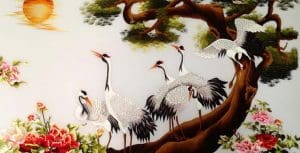
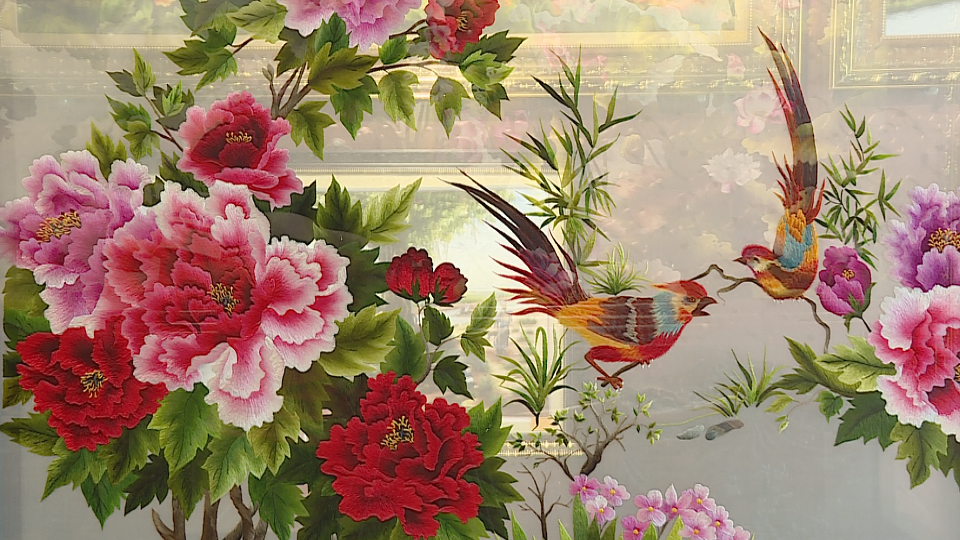
It was a piece of Vietnamese culture; customarily, young ladies are required to realize how to adorn pillowcases, window ornaments and decorative liners with hand weaving. Hand weaving assumes a significant job in Vietnamese culture; generally, young ladies are relied upon to realize how to enhance pillowcases, drapes and decorative spreads with hand weaving. Since the 1960s, hand weaving has ascended to the degree of a fine art with famous topics including scenes, creatures, blossoms, strict scenes and Vietnamese history.
Some of the individuals with physical and mental formative issues have been prepared in the compelling artwork of Vietnamese weaving painting, an expertise that challenges most gauges of tolerance and exactness. Numerous currently work in three workshops situated inside enormous focuses manufactured explicitly for transports and different explorers on this bustling thruway. I do a smidgen of embroidery myself, yet watched in amazement as these people made noteworthy masterpieces with needle and string.
-
Appliqué: It is one of the ways to identify members of the Hmong communities found throughout Vietnam. Ancient techniques have been developed into an art form by the Hmong people the Nghe An province. The art of appliqué is a method of “applying” fabric shapes by hand to produce decorative patterns on a variety of woven products.
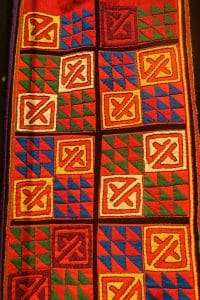

According to legend, the Hmong people had their own written script but when they were defeated by the Han Chinese they were forced to flee. In order to keep from losing their script, they applied it to their clothing, and this became the well known Appliqué of today. Although their written language has long been lost, variations of their original script can be found throughout Hmong communities and is one way to recognize members of a particular area.
-
Lace: By the nineteenth century silk weaving had gotten mainstream at the regal court in Hue and during the French pilgrim time frame the antiquated art took on another rent of life when the spouses of French authorities employed neighborhood ladies to help with their dressmaking. Before the finish of the nineteenth century another class of urban craftsmans gifted in French-style trim weaving known as cô khâu đầm (sewing women) was rising in the urban focuses, some working straightforwardly for French families and others setting up little private fitting shops of their own. A few rustic workshops were later settled to make ribbon for trade and by 1930 the northern territory of Ha Dong alone had somewhere in the range of 4,000 trim producers. With the Great Depression the worldwide market for ribbon weaving drooped and machine-made trim was presented. Today most ribbon is machine made.
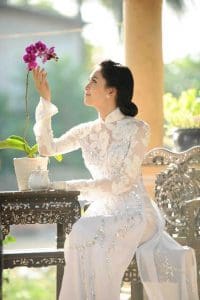
Textiles Of The Hmong:
The style and shade of Vietnam’s ethnic minority bunches feature a lively and captivating society of material customs. One of the biggest and generally assorted of these gatherings is that of the Hmong. From the steady indigo attire of the Black Hmong of Sapa to the hazardous shade of the Flower Hmong around Lao Cai each has embraced a one of a kind outfit and character. |
2. Flower Hmong: There are a wide range of factions of the Flower Hmong or Hmong Hoa across North West Vietnam. Outfits change from town to town. The gatherings of these Hmong are regularly named by the prevail shading in their outfits. For instance Blue , Green or Red Hmong.The Flower Hmong from Mai Chau up to Dien Ben Phu wear less detailed ensembles than other Flower Hmong families seen further north.They are regularly called the blue or green Hmong the same number of towns utilize predominately blue hues to adorn their outfits. They wear a dim skirt with blue adornment around the base of the skirt and a dark cover. A dark coat with weaved rings around the base of the sleeves and dark leg warmers complete their outfits. Their hair is by and large plaited and twisted around their head. Similar to the case in numerous towns nowadays the indigo colored skirts are currently just worn by the more established ladies or on exceptional events, most pick a manufactured creased skirt. also, their coats for regular wear are normally made dark from polyester. There are a few towns that consolidated the engineered skirts and coats with boards of hand weaving.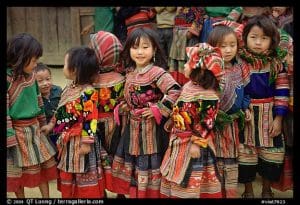 Flower Hmong schoolchildren. Bac Ha, Vietnam The Flower Hmong in the zones from Dien Ben Phu through to Sapa for the most part wear an indigo creased skirt and a dark cover with a dim coat with weaving at the sleeves and upper arms and a weaved back neckline or board. The prevalent shade of the enrichment on their outfits is red, consequently they are regularly known as the Red Hmong. They generally tie their hair high around their heads and secure it with a checkered band or designed headscarf.As you draw nearer to the territory around Sinho the ladies will in general wear creased indigo skirts that are luxuriously weaved and collaborated with a dark cover with red and flower groups alongside a dark coat with enormous weaved boards at the front and circles of blue and botanical around the lower sleeves. There is additionally a number Red Hmong here who are right away perceived by their one of a kind “huge hair” styles. These ladies gather dead hair (once in a while from relatives as well) and mesh it into their own hair. There are likewise some who mesh red fleece into their ‘huge hair. A portion of the towns likewise wear a plain dark skirt with a splendid hued coat with pattered fringes and huge boards of weaving on the upper arms, others wear indigo weaved skirts with a dark cover and a flower scarf.Again numerous ladies are settling on engineered creased skirts and polyester coats with some hand weaved boards.The conventional apparel of the Flower Hmong in the zone from Sinho to Sapa and onto Lao Cai territory is one of the most brilliant of all the Flower Hmong. The ladies of the territory wear profoundly beautiful calf length weaved skirts collaborated with a splendidly hued coat (every town has an alternate shading) which is designed by a wide weaved neckline and boards of weaving on the lower sleeves. The outfit is generally worn with a little weaved front and back cover alongside weaved leg warmers and a plain or designed scarf. |
-
White Hmong: The White Hmong used to wear plain white hemp skirts until Ho Chi Minh proclaimed that they were not viable so ladies quit wearing them. For the most part they currently wear dark pants with a dark cover flanked in red with a botanical belt along with a dark coat with designed lapels and concentric circles in blue around the lower sleeves. A few ladies can likewise be seen wearing dark headscarves with splendid red or pink decorations. There are as yet a couple of towns in the region around Muong Te and Sinho where the ladies despite everything wear the customary plain white skirts cooperated with a dark covers. A portion of the White Hmong around Sinho additionally wear tall dark topped turbans with a little designed scarf joined which is once in a while tied under the jawline.
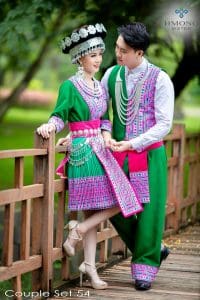
References:
TEXTILES OF VIETNAM – 2WORLD TEXTILES & CRAFT TOURS
Textiles of the Hmong – 2WORLD TEXTILES & CRAFT TOURS
2WORLD TEXTILES & CRAFT TOURS – 2World Textiles and Craft Tours
Vietnam’s Textile Industry | Study.com
14 Reasons Vietnam Is The Best Destination For Textiles Right Now – Haute Culture Textile Tours
Vietnam | Facts, History & News
Vietnam – Hoi An – Hand Embroidery – 3 | Embroidery is the c… | Flickr
Image courtesy: Google images
By Vasavi Mehta

